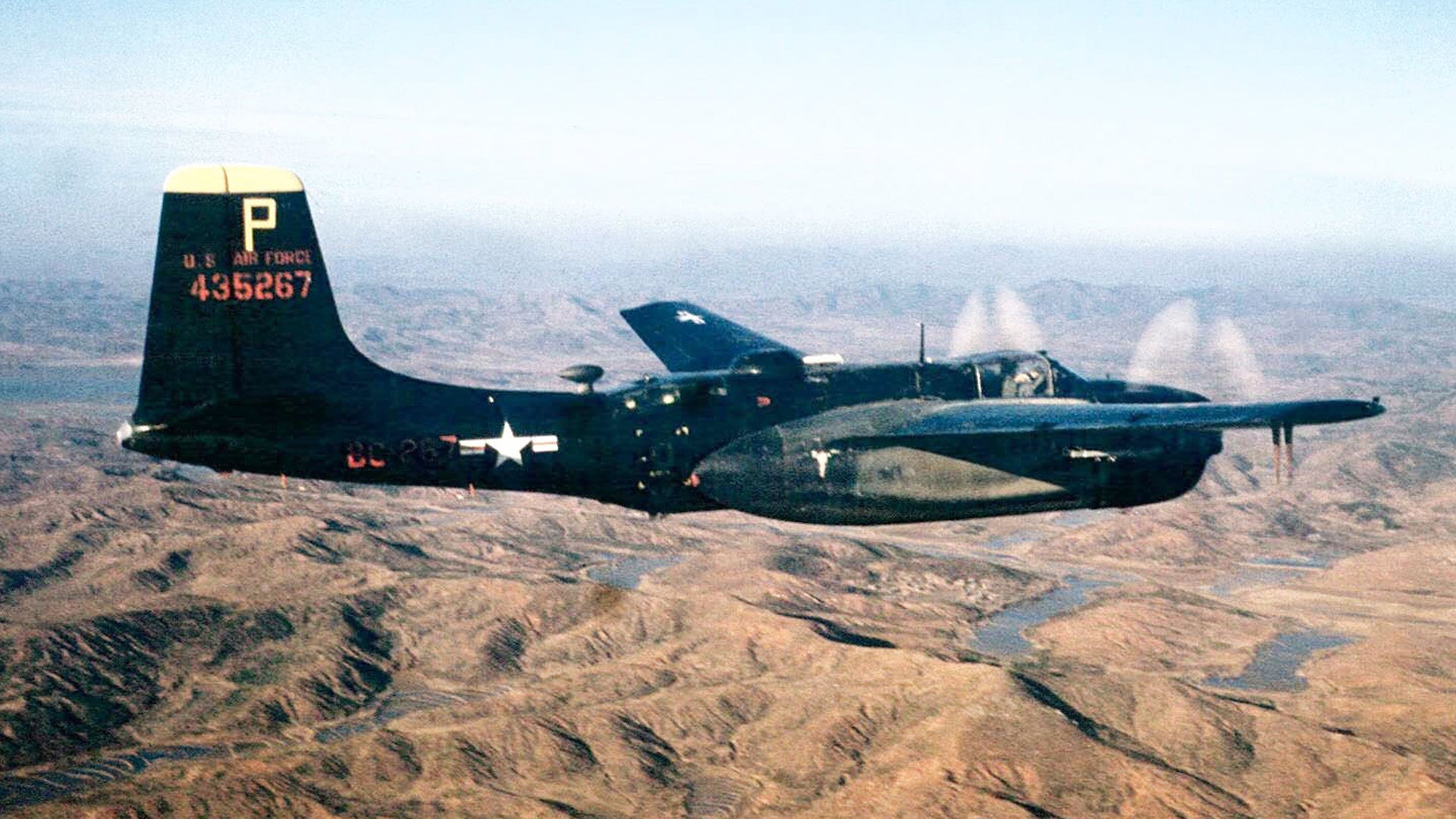Douglas’ Invader attack aircraft, commonly known by the designations A-26 and B-26, had a prolific, multi-decade service life fighting around the world with a dozen different countries. However, of those foreign operators, only France created an entirely new variant to suit its operational needs.
In 1961, the French Air Force’s L’Escadrille de Chasse de Nuit 1/71—Night Fighter Squadron 1/71, or ECN 1/71—took delivery of eight specially modified B-26 Invaders. Their job was to shoot down small aircraft trying to deliver supplies from neighboring Tunisia to National Liberation Front rebels in Algeria. At that time, France had been fighting the group, better known by its French acronym FLN, in what was then still a colonial possession for more than six years.
“By 1957, newly independent Tunisia had become a major source of supply for the FLN,” according to an article in the March 1998 issue of the Chandelle aviation history journal. “The French responded with the Morice Line, an elaborate system of sensors, electrified border fences, mine fields, and forts stretching the length of Algeria’s eastern border.”
The only problem was that this barrier didn’t do anything to prevent sympathetic aviators from simply flying over at low altitudes and eluding detection. Radars at the French naval base in Bône—known today as Annaba—could spot the intruders, but had difficulty directing friendly aircraft to intercept them.

The French Air Force hastily rigged up aerial radars to two Dassault MD 315 Flamant transport planes and rushed them into service. The twin-engine aircraft, with a cruising speed of 186 miles per hour and a maximum range of just 648 miles were clearly ill-suited for the role. Without any weapons themselves, the crews had to try and guide other combat aircraft to the scene, too.
Enter the B-26N. In 1951, France had begun to receive B-26s as part of military aid packages from the United States. Ultimately, America delivered more than 200 of the aircraft to French forces, who flew them first in Indochina and then in Algeria. The aircraft came with a good combat reputation from service during both World War II and the Korean War. The twin-engine light bombers had a maximum speed of over 350 miles per hour and could carry up to 8,000 pounds of bombs and rockets in an internal bay and on racks under the wings. Depending on the particular load-out, the Invader could fly up to 1,400 miles on a single tank of fuel.

On top of that, the aircraft had two remote-controlled turrets, each with a pair of Browning .50 caliber machine guns and late production models had three more in the root of each wing. The B-26B models had solid noses with either six or eight more Brownings. With the eight-gun nose and the top turret pointed forward, these aircraft could tear apart ground targets with 16 guns in total.
French technicians built a new nose for the Invader housing a British Mk. X air intercept radar. These systems had come from ECN 1/71’s Gloster Meteor NF.11s, which France had bought from the United Kingdom after World War II. These first generation jet night fighters would have been too fast and fuel hungry to scour the rugged Algeria-Tunisia border for protracted periods of time while hunting relatively slow-moving small cargo-carrying aircraft. At least one picture exists of a formation with a French Meteor NF.11, a B-26N, and one of the radar-equipped Flamants.
But with the sensor taking up all the space in the nose, the upgraded Invaders lost their main gun armament. Instead, each B-26N carried a pod under each wing, each housing a pair of Browning .50 caliber machine guns. In addition, each aircraft had a pair of 68mm SNEB rocket pods. The result was what the piece in Chandelle described as a “special colonial night fighter.”

It’s not clear how effective the B-26Ns actually were in their unique role. According to Chandelle, the night-fighting Invaders found nearly 40 small planes and helicopters and shot down nine. We don’t know whether the remaining intercepts turned out to be false tracks or friendly aircraft and the article doesn’t give a source for that information. “By the time that the B-26Ns became operational, supply aircraft coming in from the Tunisian side of the border were increasingly rare, and only a few interceptions were made,” aviation enthusiast Joe Baugher noted in his well-researched look into French B-26 operations.
The effectiveness of the modified Invaders quickly became moot. In 1961, the French administration under Charles De Gaulle had begun secret negotiations with the FLN and was moving to end the fighting. This move prompted a group of French officers to attempt a coup, but they failed to overthrow De Gaulle or force a change in policy. On Feb. 20, 1962, France and the FLN agreed to a peace accord that would pave the way for Algerian independence. French forces began to evacuate their bases and return home and the war came to a formal halt the next month.
In 1962, the French Air also began to retire all of its B-26s, including the N models. Only four examples of any kind ended up in French museums, with the rest going to the scrapyard or the second-hand market.
Contact the author: joe@thedrive.com
